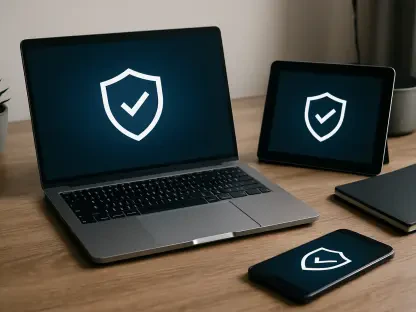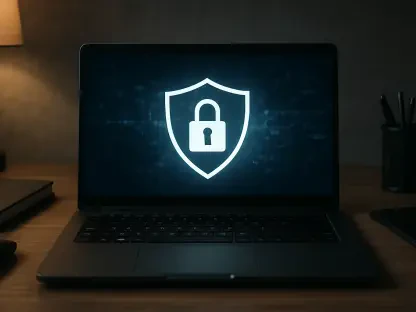In an era where digital communication is ubiquitous, Samsung’s MagicINFO 9 Server recently faced a significant cybersecurity challenge with implications for the future of digital signage. Uncovered as a critical path traversal vulnerability cataloged as CVE-2025-4632, this flaw allowed unauthorized actors to write arbitrary files with system-level privileges, posing severe risks to enterprise-grade display management systems. The issue stemmed from improper sanitization of user-supplied pathnames, enabling attackers to bypass directory restrictions and manipulate critical system files with elevated privileges. The severity of this vulnerability highlighted the inherent security challenges in connected display ecosystems, which rely on robust defenses to maintain the operational integrity of digital signage networks.
Samsung’s Swift Response
Upon discovering the flaw, Samsung acted quickly to address the risk posed by the MagicINFO 9 Server vulnerability. Known in Samsung’s records as SVE-2025-50001, the vulnerability was mitigated through the company’s comprehensive May security patch. This patch introduced stricter input validation routines, prioritizing the enforcement of path restrictions within MagicINFO’s file management subsystems. These improved protocols normalize directory traversal sequences and include allow-listing for approved directories. Moreover, the patch continually monitors for any unusual write patterns, marking a significant shift in Samsung’s strategy toward securing connected devices. The swift response not only showcased Samsung’s commitment to safeguarding its systems but also emphasized the importance of prompt action in preventing potential exploitation by malicious actors.
The MagicINFO 9 Server’s architecture further complicated the situation due to its privileged execution context, which has SYSTEM or root-level access essential for handling display configurations and updates. This elevated access magnified the potential impact of unauthorized access, allowing attackers to embed persistence mechanisms, alter firmware images, or even disrupt entire networks. This potential is problematic given that some administrative functions within the MagicINFO framework lack stringent authentication requirements, increasing susceptibility to weaponization through remote code execution (RCE) escalations. Recognizing this, Samsung’s security patch distribution method is aligned with the infrastructure used for SmartTV firmware updates, offering enterprise administrators the option to manually download updates as needed.
Addressing the Broader Implications
Despite Samsung’s effective mitigation of the vulnerability, the issue highlights broader implications and challenges within the realm of cybersecurity for digital signage systems. The transition to connected display systems is subject to increasing regulatory scrutiny, particularly when implemented in critical infrastructure contexts such as airports, healthcare facilities, and financial institutions. This scrutiny underscores the necessity for stringent patch compliance and robust security practices to guard against potential supply chain attacks. Samsung’s comprehensive approach to vulnerability disclosure, which includes detailed advisories that go beyond standard CVE descriptions, indicates a move toward transparency and meticulousness. Providing precise remediation steps is vital in ensuring that stakeholders understand both the risks and the safeguards implemented.
Moreover, considering the long-term evolution of cybersecurity in digital signage, Samsung has committed to transitioning toward long-term support (LTS) models for its business-centric products. This strategic move guarantees backward-compatible fixes while gradually introducing enhancements to the security infrastructure. As digital signage networks increasingly become attractive targets in a hybrid work environment, the industry-wide approach to dealing with such vulnerabilities will undoubtedly influence future cybersecurity standards for display management systems. The comprehensive patch developed by Samsung serves as both a preventative and corrective measure, highlighting the importance of being ever-vigilant in the face of complex and evolving cyber threats.
Paving the Way for Future Security
Upon identifying a flaw, Samsung promptly addressed the vulnerability related to MagicINFO 9 Server, documented as SVE-2025-50001. In May, the company’s comprehensive security patch sought to mitigate this risk by implementing stricter input validation, focusing on path restrictions within MagicINFO’s file management systems. These enhanced measures involve normalizing directory traversal and allow-listing approved directories, while the patch continually monitors for abnormal write patterns. Samsung’s swift action underscored its dedication to securing connected devices and highlighted the importance of quick intervention to prevent exploitation by malicious actors.
Complicating matters, the privileged execution context of the MagicINFO 9 Server, with SYSTEM or root-level access, is crucial for display management. This increases the risk of unauthorized access, enabling attackers to embed persistence, modify firmware, or disrupt networks. Given its weak authentication requirements, MagicINFO’s framework could be weaponized via remote code execution. Samsung’s patch distribution aligns with SmartTV firmware updates, letting enterprises manually download updates, thus ensuring robust security.









